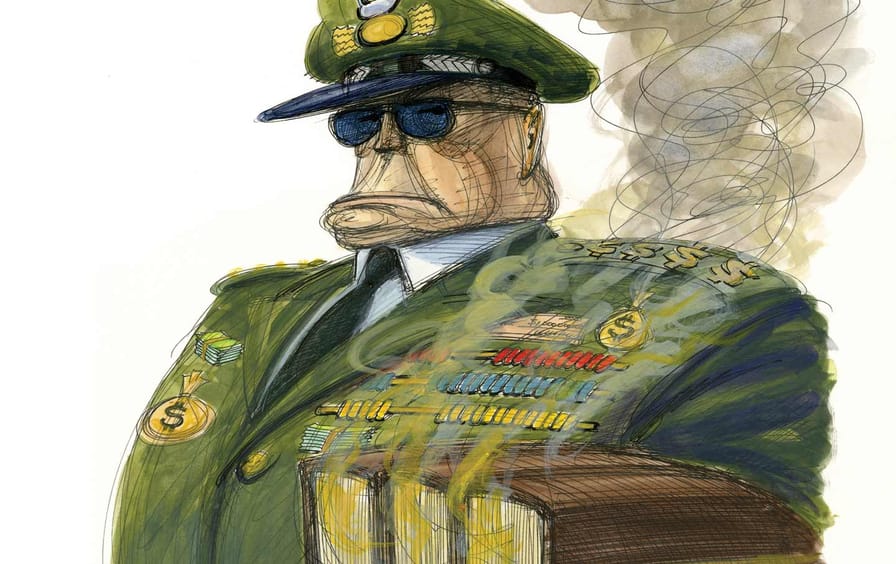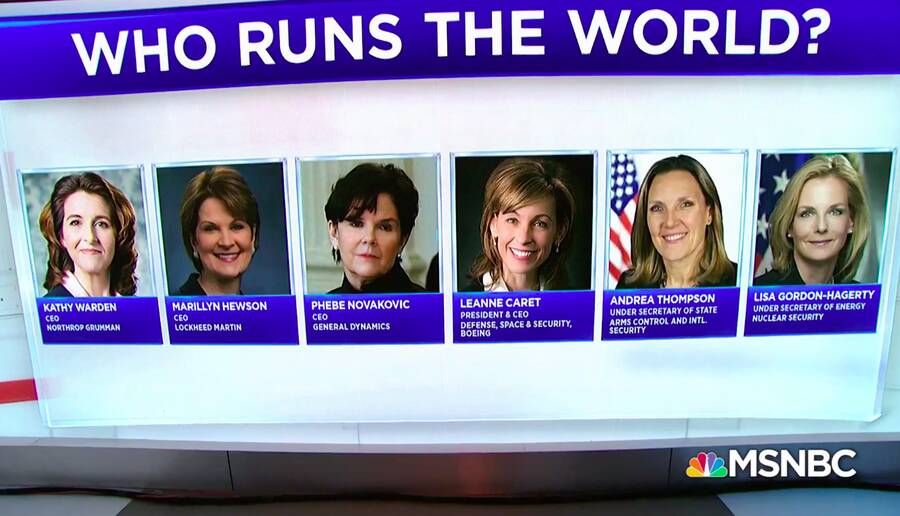It’s a no-brainer. Every day should be women’s appreciation day. Sure, we have these Hallmark milestones in the country – Black History Month, Native American Culture Month and now, March, Women’s History Month.

[Death toll in Bangladesh garment factory fire rises – CBS News November 25, 2012 ]
My own roots are embedded with strong independent women mentors. For my Scottish grandmother, she came over to Canada as a teen and worked all her life as a cook, nanny, hospital nutritionist. She played the stock market on low wages and set up her only child with some decent funds.
My mother was a single mother with my half-sister. She went from Vancouver — where her husband was a playboy with a gambling problem who had the “mafia” after him — to Flagstaff, then to Hermosa Beach, and then she married my father. Mona, my mom, was the central force of several military wives groups in places like Paris, France, Munich, Germany and Tucson.
My aunt Edna came from England to Massachusetts with two other women from the old country. They opened up an ice-cream shop in Northampton, and then eventually got deep into the restaurant field setting up a high end eatery called The Whale Inn.
I went there on vacations, recalling the stories of Liz Taylor and one of her husbands having a marriage reception there.
I absorbed stories of my German great grandmother Elfrieda who, as a midwife in North Dakota and Minnesota, delivered hundreds of babies. Another relative, an aunt, survived the allied bombing of Dresden with her five children. She helped an entire neighborhood live by scurrying them into an abandoned warehouse cellar she had used for potatoes and cauliflower.
The first women’s day in the USA – February 28, 1909 — occurred a year after the Manhattan garment workers’ strikes when 15,000 women marched for better wages and working conditions. Most of them were teenage girls who worked 12-hour days. Then, in 1911, in one factory, Triangle Shirtwaist Company (where female employees were paid $15 a week in sweatshop conditions: low level lighting, in tight conditions at sewing machines) 145 female workers were killed in a fire. This pushed lawmakers to finally pass legislation meant to protect factory workers through stringent safety measures.

[Triangle Factory Fire Photograph by Granger]
Fast-forward to today: I’m teaching a memoir writing class at OCCC-Waldport with mostly women in attendance. Memoirs are different than autobiographies, and this publishing arena is now greatly populated by women memoirists. All three “textbooks” I use in the class were written by women. Additionally, Mary Karr’s The Liars Club, and Cheryl Strayed’s, Wild, are two memoirs we reference.
Time and time again, memoir writing classes I’ve facilitated in Texas, Washington and here have been predominately attended by women who for all intents and purposes are the keepers of the family history.
Throughout my career as educator and journalist, I have seen more and more women take the lead in many fields. One magazine article I published focused on the graduating class at Washington State University’s veterinarian sciences program. All those DVM graduates were women.
The dean of the school stated there is an active recruiting campaign to get “more men into the field.” Imagine that, women undertaking vet sciences, which in 1950 was almost exclusively a male-dominated field.
The reasons for the shift in gender representation are complicated, but one truism stands: Veterinarian sciences is largely a pet field, one where communication with pet owners is vital. It is a field where the patient is actually the human. From field, to barn, to yard, to house, to bed – that’s the shift in the veterinarian field, as illustrated by our dogs and cats.
It begs the question: Are men as empathetic and responsive to the patient’s owner’s psychological and spiritual needs as women?
One of my areas of study, marine sciences, has seen a break in the male domination to sometimes a 50-50 representation of women in some grad programs.
But there are still rough waters: In 2019, on World Oceans Day, the theme was “gender and the ocean.” According to Robin Nelson, a biological anthropologist at Santa Clara:
We frame science as this idea that folks with the best ideas, folks who are willing to work hard, are those who are going to succeed. But absent safeguards protecting vulnerable scientists, she said, those folks who could be super talented, wonderful scientists get pushed out of our fields.
Peter Girguis, an oceanographer at Harvard University, echoes this:
In the absence of gender equality, we’re doing mediocre science.
In 1980, President Jimmy Carter proclaimed “Women’s History Week” in March to coincide with International Women’s Day. Seven years later, Congress declared all of March to be “Women’s History Month.”
There are problems with “a month,” as Kimberly A. Hamlin, an associate professor of history at Miami University in Ohio and author of Free Thinker: Sex, Suffrage, and the Extraordinary Life of Helen Hamilton Gardener, states:
But Women’s History Month unintentionally reinforces the prevailing idea that when women do something, it is called ‘women’s history,’ and when men do something it is called ‘history.’ Women’s History Month also allows state school boards and curricular committees to feel as though they are including women without doing enough to update textbooks and state standards, ultimately undermining the very goals that reformers and historians aimed to achieve with the designation.
I clearly remember when I was the only “guy” in the women’s literature class I took at the University of Arizona where I eventually received a BA and BS. I learned so much about women in history, not just female writers.
We are talking 102 years ago when the 19th amendment granted some women the right to vote (a number of other laws prohibited Native American women, Black women, Asian American women, and Latinx women from voting, among others).
In that lit class, I learned a bit of historical misstatement: What was deemed the first expedition to sail around the globe on a voyage to study and sample the world’s oceans occurred in 1872. Of the 243 people on board the Challenger, not one was a woman.
However, it wasn’t the first. Nearly a century before the Challenger voyage, a woman — Jeanne Baret — sailed around the world on a scientific expedition of her own. She disguised herself as a male assistant on a 1766 voyage led by a French explorer to document plants and ecosystems in distant countries. Baret is the first woman on record to have circumnavigated the globe.
“7 Countries With Horrific Sweatshop Situations”
+–+
To continue with the piece above, which will be in the local rag, out here in Lincoln Co, Oregon (Central Coast — Newport News Times), I have to put in some work of a feminist and radical, Linda Ford:
Elizabeth McAlister, in jail since April, remains steadfast, modest and unassuming. She hesitates to give interviews. She did write after her arrest about why she resists the Empire’s weapons: ‘We came to Kings Bay Submarine Base animated by the absurd conviction that we could make some impact on slowing if not ending, the mad rush to the devastation of our magnificent planet.’
Such sentiments, such absurd convictions, that anyone can interfere in the Empire’s global destruction, have to be punished. Such female dissenters have to be jailed and silenced. There should be no more silence surrounding America’s women politicals. Whether considered terrorist threats because, like Aafia Siddiqui, they are part of a group deemed an enemy race; or considered terrorist threats because, like Elizabeth McAlister, they resist and expose America’s global domination—such women will be made political prisoners of the Empire.
— “Women Politicals of the American Empire” by Linda Ford (DV)
“In The Eye of the Beholder: USA History of Imprisoning Women Politicals” (DV) Part One of review and discussion of Linda G. Ford’s Women Politicals in America: Jailed Dissenters from Mother Jones to Lynne Stewart
and
“Long Live the Armed Struggle!” (DV) Part Two of book review, and … The Revolution Will Not Be Televised or plugged onto Twitter, or in the Streets with Your Placards, or Sending in ‘Save the Whale’ Postcards
I was born a protester … My mother had to go to the school a lot and talk to the principal.
— Dorli Rainey (In conversation with author Paul Haeder)
I am being jailed because I have advocated change for equality, justice, and peace. … I stand where thousands of abolitionists, escaped slaves, workers and political activists have stood for demanding justice, for refusing to either quietly bear the biting lash of domination or to stand by silently as others bear the same lash.
— Marilyn Buck, at her 1990 sentencing (epigram in Linda Ford’s book, Women Politicals in America: Jailed Dissenters from Mother Jones to Lynne Stewart)
*Quote from, Elizabeth Gurley Flynn. In Spokane, WA, 19 years old. She went to lumber camps in Montana and Washington, speaking at IWW meetings. She stated she fell in love with her country.
+–+
This is not a blanket endorsement of all women, all of those of the female persuasion not having baby blood on their hands. In capitalism, the male dominated death machine is easily transferred to the other sex.
[ Women in Defense, a career development and networking organization affiliated with the National Defense Industrial Association, a leading industry group. ]
Offensive-polluting-skin peeling-depleted uranium fed-bunker busting-napalm spreading-TNT concussions Industries, described by the misnomer as Defense Industries (Edward Bernays would be smiling), they have garnered the woke label with their CEOs in pant suits and skirts: Definitely do not ask these women over to babysit — that is, if the baby is not blue-eyed, blond, white or of the red-white-and-blue variety.
As of Jan. 1, the CEOs of four of the nation’s five biggest defense contractors — Northrop Grumman, Lockheed Martin, General Dynamics and the defense arm of Boeing — are now women. And across the negotiating table, the Pentagon’s top weapons buyer and the chief overseer of the nation’s nuclear stockpile now join other women in some of the most influential national security posts, such as the nation’s top arms control negotiator and the secretary of the Air Force. (How Women Took Over the Killing Machine, AKA, MIC!)
It’s a watershed for what has always been a male-dominated bastion, the culmination of decades of women entering science and engineering fields and knocking down barriers as government agencies and the private sector increasingly weigh merit over machismo.
And, as Lockheed Martin CEO Marillyn Hewson told POLITICO, it’s also the result of “quieting that little voice in your head that doubts whether you can do that next job or take on that special assignment.”
But turn yourself blue trying to convince the Norte Americanos that war is bad, that when Nazi’s get supported by the USA in places like, err, Ukraine, that THAT in itself is really that region’s issue, and that missiles and guidance systems and bioweapons and cluster bombs, the lot of it, guided by these hailed women above, well, they do the bloody work the same, whether the CEO is male or female. Though, I have to say, all this macho stuff pushed down the Marvel Comic Book bred Norte Americanos, for decades, you know, the Charlie’s Angels jujutsu and now the Black Double Oh Seven, it has done the job of convincing redneck women that their role in this game is to, well, kill babies descriminately and indescriminately.
Because they are baby killers!
Yet, feminists should not view this “rise” of women as a win. Feminism, as the most recent wave of imperial-feminist articles shows, is increasingly being co-opted to promote and sell the U.S. military-industrial complex: a profoundly violent institution that will never bring liberation to women — whether they are within its own ranks or in the countries bearing the greatest brunt of its brutality. As Noura Erakat, a human rights attorney and assistant professor at George Mason University, put it in an interview with In These Times, women’s inclusion in U.S. military institutions “makes the system subjugating us stronger and more difficult to fight. Our historical exclusion makes it [appear] desirable to achieve [inclusion] but that’s a lack of imagination. Our historical exclusion should push us to imagine a better system and another world that’s possible.” — (“Against the Feminist-Washing of US Militarism“)
Here, the real heroes, a la women:

[Global Witness report points out that women who act as social leaders are the main victims of murder for carrying out their work. / Photo: Global Witness NGO ]
Finally, put a dress on this person. A little bit of eyeliner. High heels. Hmm, replace one criminal, a male, with a female criminal, and we still have criminalty:
“Exclusive: The Pentagon’s Massive Accounting Fraud Exposed
How US military spending keeps rising even as the Pentagon flunks its audit.”
“Holding U.S. Treasurys? Beware: Uncle Sam Can’t Account For $21 Trillion.”

Or not:
Meet the first female 3-star general in the US military]

The post Women’s History Month is About the Human Race first appeared on Dissident Voice.
This post was originally published on Dissident Voice.

